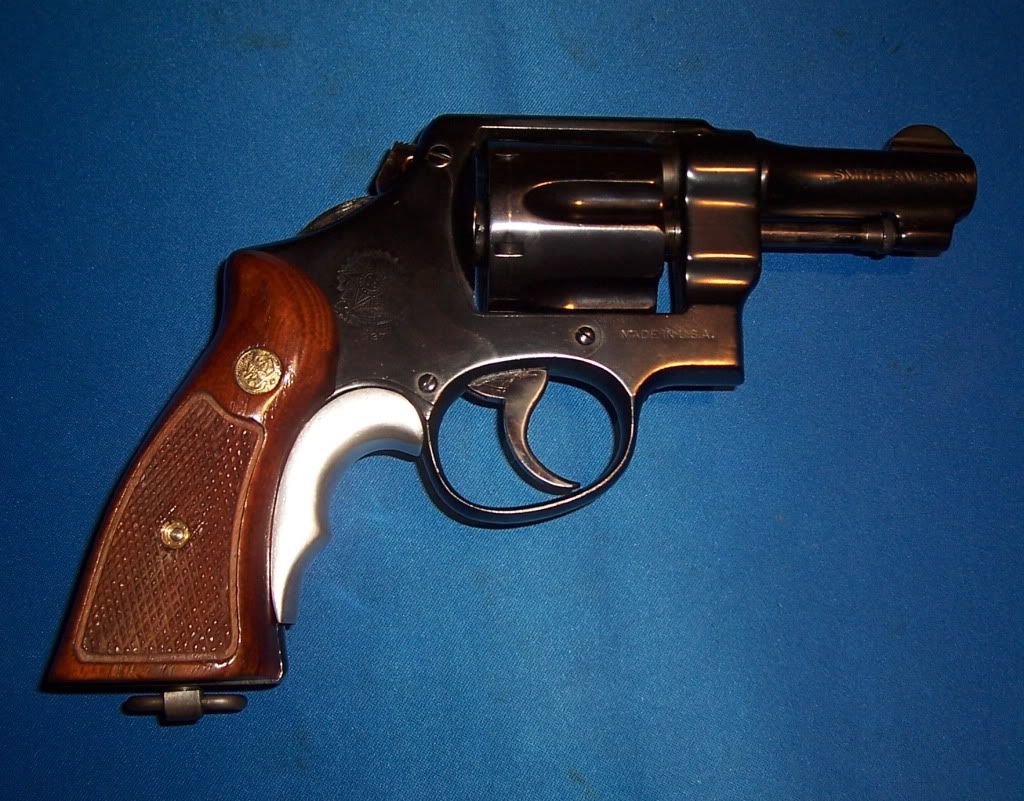Bill Akins
New member
My cousin called me the day before yesterday and told me he had a S&W 1917 in what looks like matte finish nickel that he wanted to sell. So yesterday I went over to see what it looked like. Of course the nickel isn't factory on any 1917 S&W. Not a bad looking matte finish nickel plating job though it was obviously done decades ago judging by the looks of some old rust coming through around the grip strap edges. Old rust that you can tell took decades to get there. So the nickel plate has to be pretty old itself.
It's a U.S. military model, the barrel, cylinder and frame serial numbers all match. 5 digit serial number so it may have seen WW1 service. Missing the lanyard ring but I can easily get a lanyard ring off ebay, although most likely won't find a nickel plated one, so if anyone here has a nickel plated 1917 lanyard ring they want to get rid of, please let me know.
It appeared to have original wooden grips that only had a few small dings in their bottoms. Bore and rifling is excellent as is the whole revolver overall. Nice piece except for just a little rust coming through the nickel at the edges of the front and rear of the grip straps. Cousin gave me a good deal at $350.00 and it went home with me. Getting hard to find good deals like that on these, nice that my good deal came from a family member. No family history associated with the revolver though.
Cylinder lockup is tight with absolutely no play of any kind on hammer back or hammer down. This makes the fourth 1917 S&W I've owned (still have three), and surprisingly all of them even at their advanced ages have all had MUCH tighter cylinder lockup than any modern revolver I've ever examined.
Just a little rust on the edges of the front and back grip strap. Otherwise it appears in excellent condition. I took the original wooden grips off it and put on a set of Jay Scott wide stag grips that fit my hands much better. Here's a few pics.




.
It's a U.S. military model, the barrel, cylinder and frame serial numbers all match. 5 digit serial number so it may have seen WW1 service. Missing the lanyard ring but I can easily get a lanyard ring off ebay, although most likely won't find a nickel plated one, so if anyone here has a nickel plated 1917 lanyard ring they want to get rid of, please let me know.
It appeared to have original wooden grips that only had a few small dings in their bottoms. Bore and rifling is excellent as is the whole revolver overall. Nice piece except for just a little rust coming through the nickel at the edges of the front and rear of the grip straps. Cousin gave me a good deal at $350.00 and it went home with me. Getting hard to find good deals like that on these, nice that my good deal came from a family member. No family history associated with the revolver though.
Cylinder lockup is tight with absolutely no play of any kind on hammer back or hammer down. This makes the fourth 1917 S&W I've owned (still have three), and surprisingly all of them even at their advanced ages have all had MUCH tighter cylinder lockup than any modern revolver I've ever examined.
Just a little rust on the edges of the front and back grip strap. Otherwise it appears in excellent condition. I took the original wooden grips off it and put on a set of Jay Scott wide stag grips that fit my hands much better. Here's a few pics.




.
Last edited:








